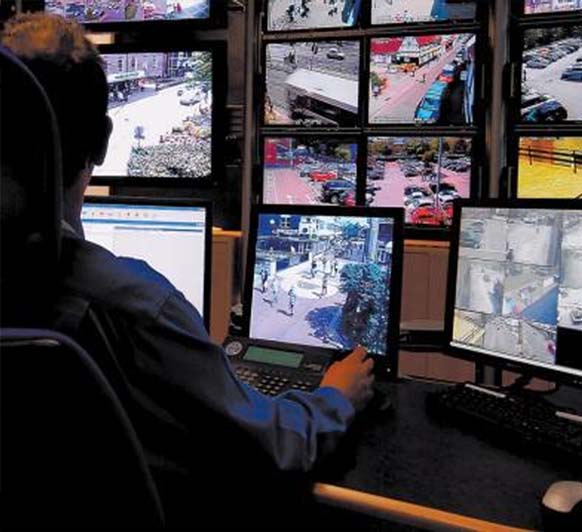
Login Into Your Account

Reset Password
Law enforcement Technology,Law enforcement Agency,Policing Technology,Smart Policing India,Homeland Security India,Border Security India,Border Management India,Cyber Crime news,Cyber Security news,Safety App,Public Safety App,Security App,Women Safety App,Police Initiative,Surveillance news,National Security news,isc event 2016,isc event 2017,scada event 2016,scada event 2017,Critical infrastructure security event 2016,Critical infrastructure security event 2017,iot summit 2016,iot summit 2017,Internet of things seminar 2016,Internet of things seminar 2017,iot seminar delhi 2016,iot seminar delhi 2017,iot conference delhi 2016,iot conference delhi 2017,top security event,security event,security event 2016,security event 2017,security conference 2016,security conference 2017,cso summit 2016,cso summit 2017,Corporate security event,Corporate security conference,security research india,homeland security research india,security think tank india
Law enforcement Technology,Law enforcement Agency,Policing Technology,Smart Policing India,Homeland Security India,Border Security India,Border Management India,Cyber Crime news,Cyber Security news,Safety App,Public Safety App,Security App,Women Safety App,Police Initiative,Surveillance news,National Security news,isc event 2016,isc event 2017,scada event 2016,scada event 2017,Critical infrastructure security event 2016,Critical infrastructure security event 2017,iot summit 2016,iot summit 2017,Internet of things seminar 2016,Internet of things seminar 2017,iot seminar delhi 2016,iot seminar delhi 2017,iot conference delhi 2016,iot conference delhi 2017,top security event,security event,security event 2016,security event 2017,security conference 2016,security conference 2017,cso summit 2016,cso summit 2017,Corporate security event,Corporate security conference,security research india,homeland security research india,security think tank india
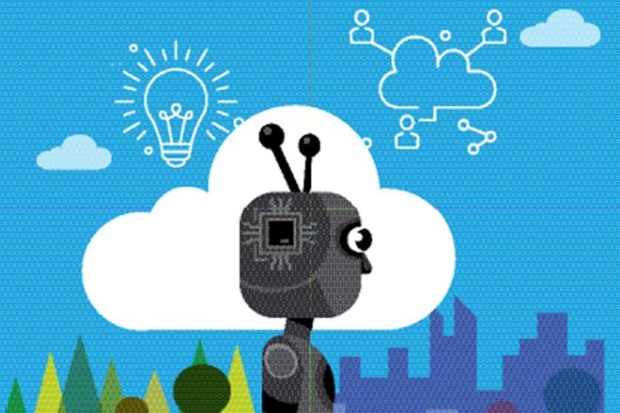
Internet of Things will find its way into manufacturing, smart cities and more; here’s why
The technology trends that will redefine the future for businesses and consumers in 2017 can be enumerated as follows:
* By harnessing the power of data, cloud computing and advanced analytics, artificial intelligence (AI) is set to fundamentally change how we interact with technology by augmenting human capabilities across apps, bots, services and infrastructure. As we move forward, democratisation of AI will fuel future innovations and empower us to solve some of society’s toughest challenges. Businesses can use AI to transform data into actionable intelligence including gaining unique consumer insights, interpreting industry trends and finding accurate outcomes to a wide variety of business problems in real-time.
* Internet of Things (IoT) will become mainstream as it finds its way into manufacturing, healthcare, smart cities, intelligent buildings, products and processes.
* Machine learning is rapidly becoming one of the most desirable technologies for consumers and businesses together. Earlier data was analysed to understand the past and the present, but machine learning reasons over the data and predict outcomes and future patterns, which further leads to new insights. Moreover, machine learning on the cloud has made it more accessible to everyone.
* Blockchain will optimise digital transformation. This technology will streamline processes to augment speedy transactions, eliminate clearing houses and resolve regulatory bottlenecks. Microsoft’s Azure Blockchain as a Service (BaaS) provides an open, hyper-scale cloud platform and an expanding ecosystem of blockchain technologies for enterprises, consortiums and governments. It will further help optimise their digital transformation journey in a cost-effective yet scalable manner across development, testing and production environments.
* Cognitive services will redefine how we interact. From mere translation of text or speech from one language to another, machine translation has moved paces ahead and is now offering services like real-time translations. Translation services will not only be restricted to language but will extend into cognitive offerings. With cognitive services, developers can easily add intelligent features such as emotion and sentiment detection, vision and speech recognition, knowledge, search and language understanding into their applications.
* Cyber security will become the prime focus for all organisations. Digital India vision, combined with opportunities of the fourth industrial revolution, demands a comprehensive security infrastructure. Cyber threats continue to evolve and attackers are gaining access to credentials and high security information, posing a threat to the legitimate user and businesses.
* Chatbots, our personalised digital assistants, will learn from user behaviour and analyse data to predict more user relevant commands. For example, ordering food to setting temperatures at home to even buying groceries.
* Virtual reality (VR) and augmented reality (AR) will find applications beyond entertainment. Technology advances and reductions in cost will mainstream VR/AR to a number of business, education and personal experiences.
I see the India Stack (the complete set of API including Aadhaar for Authentication) as an accelerator for digitising the consumer—taking advantage of the billion Aadhaar identities and the billion phones in the country. This will accelerate e-commerce, e-government services, education, healthcare and agriculture. But it will impose much stress on cyber security. Federating Identity, where the user’s credentials are stored with the identity provider, across multiple platforms will become key.
We foresee that artificial intelligence, machine learning, IoT and smart devices will play a pivotal role in designing products and services of the future. These technologies are set to become an essential part of our daily lives.
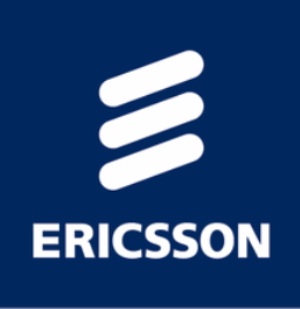
Ericsson says demonstrated IoT solutions in Andhra Pradesh village
Both projects -- Connected Aquaponics and Smart Water Grid Management -- were demonstrated in the presence of Andhra Pradesh Chief Minister N. Chandrababu Naidu, after a three-month pilot.
Ericsson earlier this year signed a memorandum of understanding (MoU) with the Andhra Pradesh government and the University of California - Berkley to help improve lives of farmers in and around Mori.
"The 'Connected Aquaponics' and 'Smart Water Grid Management' IoT solutions being demonstrated here will help improve harvest and optimise water distribution. It has the potential to provide an improved life for millions of farmers in the country," Anand Varadarajan, head of Ericsson Research, Chennai, at Ericsson India, said in a statement.
The company said that Connected Aquaponics integrates aquaculture and hydroponics for reuse of the ammonia-rich waste water from aquaculture for organic farming and recycle the water back to the aqua farm.
"Using wireless sensor network and Ericsson's AppIOT platform, we enable the monitoring of the aqua farm 24x7, thereby enabling the farmers with real-time information," the company said.
This enables the farmers to increase the yield as well as bring down the production cost with optimum use of the raw materials and repeated use of water.

IoT, PoS, ATMs under major security threats in 2017: Report
“Next year will take the cybersecurity industry into new territory after 2016’s threat landscape opened doors for cybercriminals to explore a wider range of attacks and attack surfaces,” said Raimund Genes, chief technology officer for Trend Micro. “We foresee the General Data Protection Regulation (GDPR) causing extensive data management changes for companies around the world, new attack methods threatening corporations, expanding ransomware tactics impacting more devices and cyber-propaganda swaying public opinion.”
In 2016, there was a large increase in Apple vulnerabilities, with 50 disclosed, along with 135 Adobe bugs and 76 affecting Microsoft. This apparent shift in exploits against vulnerable software will continue in 2017 as Microsoft’s mitigations continue to improve and Apple is seen as a more prominent operating system.
The Internet of Things (IoT) and Industrial Internet of Things (IIoT) will play a larger role in targeted attacks in 2017. These attacks will capitalise upon the growing acceptance of connected devices by exploiting vulnerabilities and unsecured systems to disrupt business processes, as we saw with Mirai. The increasing use of mobile devices to monitor control systems in manufacturing and industrial environments will be combined with the significant number of vulnerabilities found in these systems to pose threats to organisations.
Business Email Compromise (BEC) and Business Process Compromise (BPC) will continue to grow as a cost-effective and relatively simple form of corporate extortion. A BEC attack might yield $140,000 by luring an innocent employee to transfer money to a criminal’s account. Alternatively, hacking directly into a financial transaction system, while requiring more work, will result in far greater financial windfalls for criminals — as much as $81 million.
“We continue to see cybercriminals evolving to the changing technology landscape,” said Ed Cabrera, chief cybersecurity officer for Trend Micro. “While new ransomware saw an exponential increase in 2016, that growth is no longer sustainable, so attackers will find new ways to use existing malware families. Similarly, changes in IoT open new doors to go after additional attack surfaces, and software changes push criminals toward finding different types of flaws.”
Highlights from the 2017 predications report include:
• The number of new ransomware families is predicted to plateau, only growing 25 per cent, but will branch out into IoT devices and non-desktop computing terminals, like PoS systems or ATMs.
• Vendors will not secure IoT and IIoT devices in time to prevent denial of service and other attacks.
• New vulnerabilities will continue to be discovered in Apple and Adobe, which will then be added to exploit kits.
• With 46 per cent of the world’s population now connected to the internet, the rise in cyber-propaganda will continue as new world leaders are appointed, potentially influencing public opinion with inaccurate information.
• As seen in the Bangladesh Bank attack early in 2016, BPC attacks can allow cybercriminals to alter business processes and gain significant profits, and BEC attacks will continue to be useful to extort businesses via unsuspecting employees.
• GDPR will force policy and administrative changes that will greatly impact costs and require organisations to conduct complete reviews of data processes to ensure compliance.
• New targeted attack methods will focus on evading modern detection techniques to allow threat actors to target different organisations.
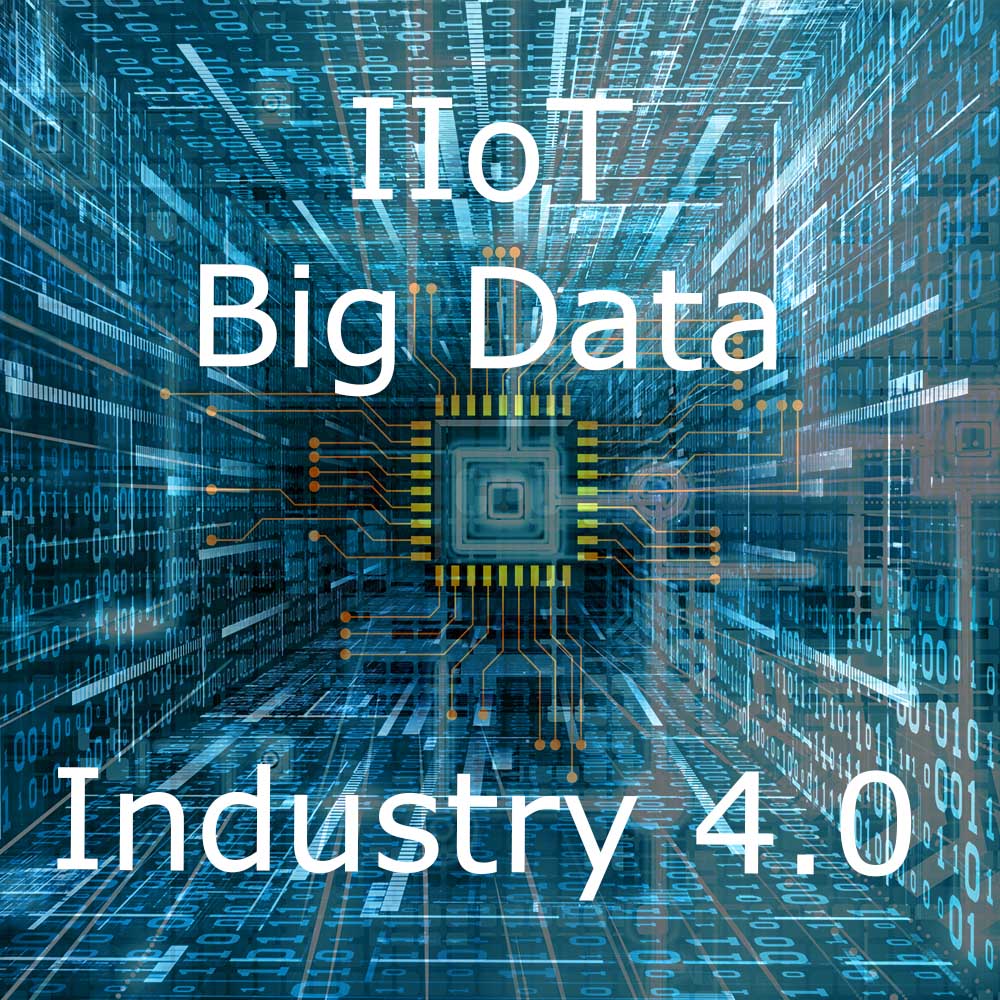
The Industrial Internet of Things: Why you need to get up to speed fast
However, more recently a subcategory of IoT, the Industrial Internet of Things (IIoT), has been getting a lot of well-deserved attention. This brings together many key technologies – including machine learning, big data, sensors, machine-to-machine (M2M) computing, and more – in an orchestrated fashion within manufacturing operations.
O’Reilly’s Data Science for Modern Manufacturing report lays out the fundamentals of the Industrial Internet—what it is, how government initiatives are promoting it, and how it’s being driven by big data and cloud technologies. It begins with the following statement:
“The world’s leading nations are standing at the precipice of the next great manufacturing revolution, and their success or failure at overhauling the way goods are produced will likely determine where they stand in the global economy for the next several decades.”
There are many benefits that the IIoT promises to deliver, like shorter production cycles, more timely responses to supplier orders, the ability to predict consumer shifts and optimise supply chains to meet new demands, and the ability to quickly retool for design changes.
But the IIoT also has the capacity to transform companies—and even countries—in several other ways, opening up a new era of economic growth and competitiveness.
At its best, the IIoT combines people, data, and intelligent machines to improve productivity, efficiency, and operations across the manufacturing sector.
Take for example, two aspects:
• Fuel efficiency: Fuel is typically the largest operating expense for any airline. Over the past 10 years, fuel costs have risen an average of 19 per cent per year.
By introducing big data analytics and more flexible production techniques, manufacturers stand a chance to boost their overall company productivity by as much as 30%.
• Predictive maintenance: Predictive maintenance helps identify equipment issues for early and proactive action, creating better functioning equipment that lowers overall emissions.
It can also result (in the example of GE) in saving up to 12% in scheduled repairs, reducing overall maintenance costs by up to 30%, and eliminating up to 70% of Connected manufacturing will not only create huge opportunities for growth, but it will bring change and upheaval to IT and operations teams.
There is no simple “cookbook” for implementing an effective IIoT strategy and infrastructure; however, there are some key things to bear in mind as you ready your organisation to embrace and reap the benefits from the IIoT:
• Creating and managing an IIoT infrastructure within an organisation requires a unique set of skills and knowledge that is incredibly difficult to find and will become increasingly in demand as this space grows.
• IT leaders and executives need to make sure they have the right mix of talent that understands how to collect, analyse, and react to data, and knows how to effectively put it to work.
• In the data science field, there is much more demand than available talent. This will only become more exaggerated over time. Thus, it’s important to also look for data integration, IoT, and big data solutions that are intuitive and easy to deploy and adopt by those who may not be full-fledged data scientists.
• Businesses will need to look for people with the ability to not only design a product, but to also rapidly re-calibrate both the processes and pace of an agile manufacturing cycle.
The business benefits that the IIoT promises will far outweigh the challenges that may need to be overcome in order to get there.
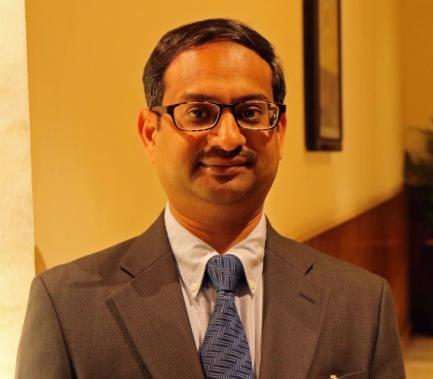
We are bringing workplace to the people: Honeywell
Q. Is Industrial IoT, which seems to be the buzzword at Honeywell, any different from the IoT that we know ?
IOT has driven the world in many aspects. This is because there is an increased appreciation for smart objects, which tends to make life easier. In recent times, almost every appliance we use, ranging from clothing, cars, to ACs, washing machines and other household electronics are being considered for some level of connectivity to the internet. Industrial Internet of things (IIoT) can be viewed as a systematic expansion of automation and a progressive improvement of how machines communicate to each other at the manufacturing sites. It is connects 3P’s, that is industrial plants; people in those plants with specific information or domain knowledge or specific expertise; and it creates processes which are efficient and business and people to interact and collaborate more. So connecting processes, people and plants is what is aimed at by the industrial internet of things. For instance IIoT has become a necessity for people working at very remote places such as off-shore oil sites and mines. In the past, we had to send people to work then which was very risky but with the help of IIoT the work will come to people. It will make life simpler and easy for them.
Q. So in India, are you seeing process industries adopting some new technology that you bring on the table?
Today it is very difficult to categorize between company that is telecom, industrial, IT, etc. It is all becoming a melting point. The people who will understand and leverage these changes will get more and more benefits. According to me, people should not do things for the sake of doing it but should really solve the unsolved problems by applying IIoT. We see that it’s a right direction. It still needs some time to grow as India’s IT market is growing very fast and the government of India is trying to push the skill of India, make in India, Cashless India. Eventually it will become IIOT. Therefore we remain very optimistic about it. Although it is not a new thing but is silently evolving in the background . Soon people will recognize and it will become a part of life.
Q. In India, who do you think would be some of the early adopters of IIoT?
IIOT is also like the internet which nobody controls but people find advantages of it, and it just gets adopted. In a similar manner, IIoT will get adopted.There will be challenges as there is nothing in the world without challenges. The more progressive the industry, like oil & gas, faster will be adoption, and then the rest of the people will follow suit. And this is how Honeywell will leverage current user of IIoT to get non-users to explore and experiment. Secondly, at Honeywell, we talk about connected people or connected workers, and there we want work coming to people and not people going to work. All these will naturally drive people’s interest, and that has an advantage because at some point in time the cost of operation will come down. IIoT should not become a burden, and as long as it solves problems, users will recognize that IIoT will increase efficiency and safety, and reduce liability and as a result provide profits.
Q. When you are presenting a case to your potential customers, who all are the decision influencers, specially for IoT ?
When we go to present our case, we see technology guys excited about these things. Decisions are taken on business case, as business heads ask what is it that I am getting by adopting these new technologies. What new problems are we solving and what is it bringing to my safety, reliability, efficiency and profitability. That’s why discussions always go to a senior level business decision makers. And we have seen faster adoption where senior people are also aware of this transformation. Some people call it digital transformation but unless it is understood at top level, adoption takes time.
Q. Do you have some kind of benchmark which you present to prospective customers in terms of the kind of investment required, the ROI expected, time periods for RoI, etc. Some clear tangible benefits. Do you have some statistics from previous deployment that some idea one can get?
Our style of working with customers is a little different. We first identify the industry and players within the industry who are willing to listen to us. This is important. We propose a consulting led study in terms of where all the IIOT components can bring about a change. A basket of few tried and tested solutions that we have from our other customers is shared with prospective customers. The idea is to let them experience the change in which they collaborate; or themselves address the problem they face in the plant and bring about agility to solve it faster. Can they, with the new solution, solve a issue related to plant in 2 hours, for which it took 4-5 hours earlier. We believe in one at a time approach rather than a big bang approach. Customers to customers are different and hence we first identify challenges and then try to solve it. This is the way we are doing the projects so far. We want to build the confidence and trust of the customers and hence we try to structure the program in a certain manner. IIoT is not about revolution, it is an evolution.
Q. What are some of the things which should be in place, or are basic requirements before an IIoT project ?
We have to make sure that the facilities or the plants are ready for connectivity. That is required for all IIoT type of solutions. We first look at what the company has and then we decide how to retrofit infrastructure, or put another layer over it to make it IIoT ready, so the company doesn’t have to replace or throw away old equipment. All these will have connectivity which needs to be secure. When it comes to IIOT, one cannot separate it from cyber security as the Internet makes the system open. So security is very important part of IIoT. When Honeywell started embarking about IIoT, a parallel part was cyber-security. Then we talked about ensuring the connectivity and plants to a level where there is abstraction layer, it does not matter what you have below that layer, it could be equipment from Honeywell or any other company from a totally different vendor. Once you make that layer, then you can take advantage of everything that is new and available. It could be cloud, mobility, data analytics because these things won’t care about brand or make. Most important it so ensure that the customer feels comfortable about it.
Q. What is happening on a standard front and is there some stability that is likely to come in because of that.
On internet, you cannot force a standard easily, unless lot of people take that. We all know that OpenSource and Cloud are a result of this. According to me, there is no enforcing body that would tell you to do things in a particular way. But there are components which will be standardized. When you are talking about plant equipment communicating with each other, one of the standards is OLE (Object Linking & Embedding) for process control. OLE was a term got by Microsoft 15 years back. If you are using MS Office, you can take a picture and put it into word file and take a word file into power point. So object linking and embedding into another one becomes easy. If you apply that to our industry, that is what is called OLE for Process Control, and that is OPC. This is an emerging standard which is gaining acceptance in the industry. More and more people are adopting OPC, and I am sure it will become a standard. Then there are standards emerging on how to store data in cloud, how to use that data and how it is distributed in a standard way. What we are imagining is when we create IIOT system for a customer, it is not only Honeywell who will make use of that data but many other technology users will also use it. You don’t have to be an expert in all the fields to make use of data and do analytics and decision making based on that data. And for this we need systems as open as possible. Standards are evolving and are open to market forces rather than agency forcing it.
Q. What has been your experience in terms of quality of telecom services, and do unreliable and inconsistent telecom services come in the way of using and leveraging IIoT?
I don’t think that has been a big challenge to us in the recent past. It is not because technology is changing but telecom is coming in a big way and is gaining airways rather than physical media. We believe in going wireless for a lot of things we do. It will help workers avoid dangerous areas. Because of IIOT we can track things as it has GPS. Therefore the infrastructure which was required for the connectivity in the past(copperwire/ fiber-optic) may become broken. Those hassle will go away and it will become more viable in terms of making people, equipment and processes to go wireless.
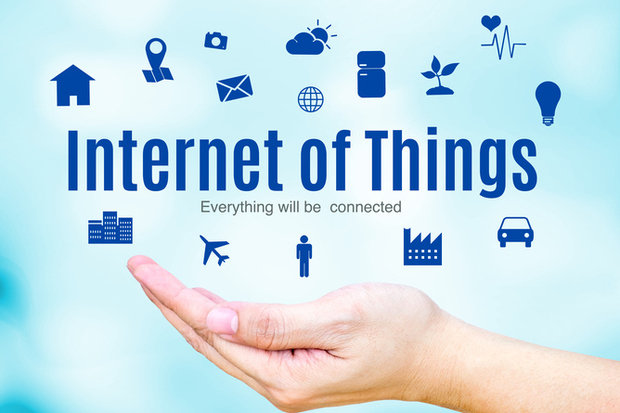
The IoT: Gateway for enterprise hackers
So, a webinar this week hosted by The Security Ledger titled: “Who Let the IoT in?: Finding and securing wireless devices in your environment,” was designed to offer some advance advice on how to cope with it.
Paul Roberts, founder and editor in chief of The Security Ledger, who moderated the event, began by framing part of the problem: Although the IoT is now well established, many of the legacy tools enterprises still use to identify and manage vulnerable devices were, “designed for the ‘Internet of Computers’ rather than the IoT.
“They’re poorly suited to spotting the radio frequency and other wireless communication protocols that connected smart devices use to communicate and function,” he said.
In other words, if you can’t see it, you can’t manage it. So, much of the discussion centered on what to look for and how to find it. Ted Harrington, executive partner at Independent Security Evaluators and one of three panelists, said that consumer IoT devices, “are being brought into the enterprise in an unsanctioned, even if unintentional, way.”
And the warning is that these devices are indeed a clear and present danger to enterprises. They remain notoriously insecure, which makes them the weak link that can allow attackers to hack into them and then “pivot” too much more important and valuable parts of the network.
GET YOUR DAILY SECURITY NEWS: Sign up for CSO's security newsletters
The panelists noted that besides the devices themselves, another element of the expanded attack surface is being created through relatively new kinds of wireless networks that cater to low-power IoT devices like electric meters or smart watches, which emit small amounts of data.
Bob Baxley, chief engineer at Bastille Networks and another panelist, said the, “long-range, low-power, low-data-rate, nearly free protocol,” offers an alternative to WiFi and cellular, which have different strengths and weaknesses but are both “power hungry.”
He said the new networks amount to, “a huge slice of the performance space,” that until recently was not covered by other protocols or vendors. “Once you have it, you can start deploying sensors widely for pennies, and it opens up a whole bunch of new use cases for a whole bunch of things,” he said.
So, of course, new and established companies are flocking to it. Baxley mentioned Sigfox, LoRa and NarrowBand IOT, but added that, “huge players like Comcast, Verizon and Orange have publicly announced they are getting into this space.”
Of course, enterprises are likely aware of their IoT devices that differ from the consumer market – Baxley mentioned the sensors that handle the physical security system, such as door locks, and said other automated systems include everything from forklifts to lighting to the HVAC environmental controls in a data center.
But Harrington noted that there are IoT devices mainly aimed at the consumer market that are common in enterprises as well.
“The prime example is the smart TV,” he said. “You can’t walk into a conference room without seeing a large monitor for presentations or conferences. They’re generally the same things that a consumer would buy.
“And what’s compelling is that TVs have a tremendous amount of computational power. Adversaries like that because it enables them to do a lot of things,” he said.
To avoid getting burned by IoT vulnerabilities, the panelists said IT departments need to know what is connected to their internal environment. Right now they frequently don’t.
Baxley, whose firm uses a software-defined radio sensor to scan for radio-enabled IoT devices on a network, told of a job his firm did for a major credit processing company, where the director of IT security, “was sure that the data center would be free of unknown wireless. It was very secure – even the employees were escorted in.
“But as soon as we turned on the sensors, we saw that all the HVAC units were beaconing ZigBee (a short-range wireless protocol) – you could clearly see them on the UI,” he said.
“Theoretically you could ‘talk’ to them from the parking lot, which makes it an interesting attack vector.”
Baxley added that the newer, cheaper, wireless protocols on the market have a much longer range, which would allow attackers to operate from farther away. “Now I don’t have to be 200 meters away, I could be two kilometers away to talk to it and mess with it (a device),” he said.
The panelists stressed that the risk is not so much that an individual device is compromised, but that it provides a gateway to the network. Harrington called them “stepping stone” attacks.
“Even a modestly sophisticated attack is not after the end victim directly,” he said. “The proverbial question is that if someone hacks my light bulb, who really cares? But what it means is that it is a pivot point into the network. You find the weakest link in a trust chain and then leverage trust or access to get to the final victim.”
And, as security experts have been saying for years, IoT devices are rarely designed with security in mind. The third panelist, Drew Fry, manager of PwC’s Cyber Threat Detection and Response practice, noted that, “the development cycle – the time engineers have to design and develop the chips, select the protocols and then go to market – is so insignificant that to stay competitive, they are going to the easiest, most vulnerable thing. Not because they don’t care but because it works. It’s easy to make Telnet work. It’s easy to use built-in, default root passwords,” he said.
But while the IoT threats are obviously expanding and evolving, both Fry and Harrington said security basics remain the same.
“We’re seeing the same problems we saw 20 and 50 years ago,” Fry said, “where we have to go back and find whether devices are being properly patched, physically secured or being allowed to communicate without restriction. We need to make sure this is something we are looking for, and that if an attacker is using something like this device, we can detect and analyze it.”
Harrington said he believes the IoT, even with the new wireless protocols involved, doesn’t even amount to a new paradigm. “The IoT has changed many things,” he said, “but from a security perspective, it’s the same challenge as dealing with any other security risk. It requires a programmatic approach – threat modeling.”
That, he said, has four components:
Identify the assets your organization cares about protecting.
Identify your potential adversaries – nation states, organized crime or other kinds of groups.
Understand your attack surface – the IoT is just one of them.
Know how adversaries are likely to attack.
“That approach will help companies think through this and any security problem,” he said. ”Then you can start thinking about tools and techniques.”

10 giant steps for the Internet of Things in 2016
I find more value in learning from mistakes and successes in the analysis than judging the forecasts. So this year I thought I would do something a little different. I looked back at the events of 2016 and evaluated which events marked real progress in the advancement of IoT. So here, in no particular order, are my 10 giant steps forward for the Internet of Things in 2016.
1. Softbank acquires ARM showing value of the edge.
Softbank’s acquisition of ARM for 25 times revenue was a force major establishing the of the value of the edge in IoT. Softbank captured two key resources for its IoT strategy: a dominant foothold in the infrastructure of the IoT in the form of microprocessors at the edge and over 5,000 people who understand how to create and innovate in the digital world. The price fed bubble talk for many but provided insight and focus within the technology stack for those who understand that IoT is not a fad but a major shift that will create new value for decades. I also note that the press release was the first I have ever seen that cited singularity as an M&A thesis.
2. GE moves Predix to Microsoft Azure to focus on application services.
Predix was one of the big five IoT cloud platforms but when GE moved to host it on Azure and then followed with a string of IoT application supporting acquisitions they solidified the consolidation of the cloud platforms and clarified that the real value was at the application layer. GE now refers to Predix as a cloud operating system and offers an array of IoT application support services: data analytics, equipment health forecasting, field service logistics. Predix is to industrial IoT as Windows is to desktop computing and GE is assembling its version of “Office” for those looking to transform their businesses with the IoT.
3. Fitbits used in 100 clinical trials validates consumer wearables.
One of the most discussed topics in healthcare is the “snake oil” of the new wave of IoT-driven consumer health products. Meanwhile, behind all the arguments of accuracy, precision and clinical relevance researchers are quietly using Fitbits in over 100 clinical trials of devices and therapies. The emergence of this consumer-wearable technology in clinical validation shows that the value of sensors is not apriori determined by its accuracy, rather its value is in what it measures and the importance of same. In this case, researchers get new insights into human behavior and its effect on the devices and therapies they are testing.
4. Omada Health behavior modification app receives CMS reimbursement.
2016 will be remembered as the year when therapists finally embraced human behavior modification as a method of care. Every year the CDC publishes a report that highlights how 50 percent of chronic care costs, which make up 85 percent of all healthcare costs, are due to patient behavior, or more correctly misbehavior. Omada Health was a leader in a study that showed how mobile apps integrated with simple DIY consumer devices like weight scales and activity monitors help patients with pre-diabetes change their behavior, lose weight, and avoid the onset of the disease. Omada showed that a mobile app operated by patients can provide meaningful medical outcomes. Centers for Medicare-Medicaid Services (CMS) is approving reimbursement for that care.
5. Verizon and AT&T solidify IoT ecosystem with launch of LTE Cat M networks.
If we put aside the challenge of following the LTE steering group’s IoT acronym shell game — Cat 0, Cat 1, Cat M1, Cat M2, NB-IoT — the fact that both ATT and Verizon announced the near-immediate availability of an IoT-specific networks marked carrier recognition of the IoT as a market separate from smartphones. Some say the announcements were an attempt to forestall the emergence of Low Power Wide Area Network (LPWAN) upstarts like LoRaWAN, Ingenu and Sigfox. and this certainly played a role for these U.S.-based carriers. But the Cat M announcements validate the ecosystem of everything from components to modems to spectrum for developers and give them a familiar carrier option for their IoT solutions. Attention now shifts to the service plan designs for these new applications, i.e. cost per megabyte versus cost to connect versus cost per year per device. The LPWAN competition will shake out the business models and developers can design with the confidence that their applications will be supported by network suppliers.
6. Qualcomm moves from mobile to IoT, acquires NXP.
The value of Moore’s Law has shifted from increased processing power at reduced cost to reduced power at reduced cost. As the dominant provider of integrated processor and connectivity technology to the mobile and smart phone industry, Qualcomm’s acquisition of broad line microprocessor and semiconductor manufacturer NXP confirmed the IoT as the growth market for the semiconductor industry. Qualcomm bought both NXP’s edge-capable devices and the long tail distribution channel that it knew it needed to reach the emerging suppliers of IoT solutions. I hope that the technology flow will go both ways and the emerging IoT developers will gain access to the technologies Apple and Google have had enjoyed from Qualcomm.
7. NEST “bricks” Revolv and everyone learns a lesson.
When it comes to the IoT, hardware and software are inseparable. You can’t treat hardware like it is software. Nest became the poster child of how not to manage an IoT product lifecycle when it announced that not only would it no longer provide updates to its Revolv product, it was going to “brick” them all. This might work when users can just download a newer version of an app, but this doesn’t work when the product is controlling people’s homes and part of their physical life. The uproar was immediate and harsh, deservedly so. Nest validated all the traditional home control manufacturers’ prognostications that Nest was not a serious home control product. IoT product managers all learned a lesson from Nest’s blunder, or should have.
8. Dyn DDOS attack shows data security is not just about me.
The Dyn distributed denial of service (DDOS) attack was arguably the security hack event of the year. The interesting thing about it was that it was not about privacy and personal information. It was about poorly designed and constructed devices allowing major interruption of infrastructure and thus other internet-based services. I will not go into the details of the hack here (they are covered thoroughly elsewhere), but look for this event to open the door for government regulation and monitoring of the IoT device manufacturing industry. The manufacturers have obviously not regulated themselves to provide digital security and now their products have become a threat to the entire country. Three key lessons for manufacturers from this event: (1) security is hard to retrofit, (2) security is not just IT’s problem, and (3) security is about device behavior as well as data.
9. Uber and Tesla convert self-driving cars to regulatory issue.
While generally I do not like government involvement in business enterprise, the entry of regulatory constraints in a technology space is usually a sign of both maturity and consumer adoption. Uber, an internet-based ride-sharing service, is centralizing the sharing part of their business by taking car owners out of the loop and replacing them with Uber-owned self-driving vehicles. Engineers, apparently the safest drivers with the best judgement, were left in the passenger seat but the cars were autonomous. Uber, which has become an uber-lawyer enterprise, fighting government-taxi duopolies around the world, is now calling attention to the lack of regulation for self-driving cars. On a less positive front, Tesla put self-driving cars at the center of attention when one of its vehicles, while in self-driving mode, was involved in the first self-driving car death. The Tesla events highlight the challenge of human involvement in the design of autonomous safety critical systems. Experts in the field, e.g. avionics, will tell you that it is not enough to make the system work, you also must design it to deal with operator error. Self-driving cars are no longer an engineering challenge and now take on the much slower process of managing liability by establishing regulatory environments that are both socially acceptable and economically viable.
10. Pokemon Go! shows the human side of augmented reality.
I am not sure many IoT developers played or studied the Pokemon Go craze, but those working on augmented reality applications should be very excited. The speed with which the game was adopted and enthusiasm of its players is a testament to the power of Augmented Reality (AR) in using digital information while performing real world tasks. Artificial Intelligence (AI) and Virtual Reality (VR) seem to get more attention in the news and popular media due to their prominence in science fiction, but AR offers near-term material gains in productivity, safety and quality through simple visual integration of digital information with real world activities. Pokemon Go showed developers three important lessons: (1) handheld AR is so intuitive even children can easily use it, (2) even low fidelity scene registration is compelling to the human visual experience when combined with geolocation, and (3) existing mobile technology is sufficient to effectively implement, i.e. this is a software and experience design problem.
So there they are. I didn’t predict any of these, but neither did anyone else is most cases. I hope that by highlighting the events and understanding why they are important others will continue forward with these lessons. For those familiar with the children’s game Simon Says you may feel, like me, that many of these giant steps were taken behind our backs. But given the expectations for how the IoT will change our lives I'm okay with that.
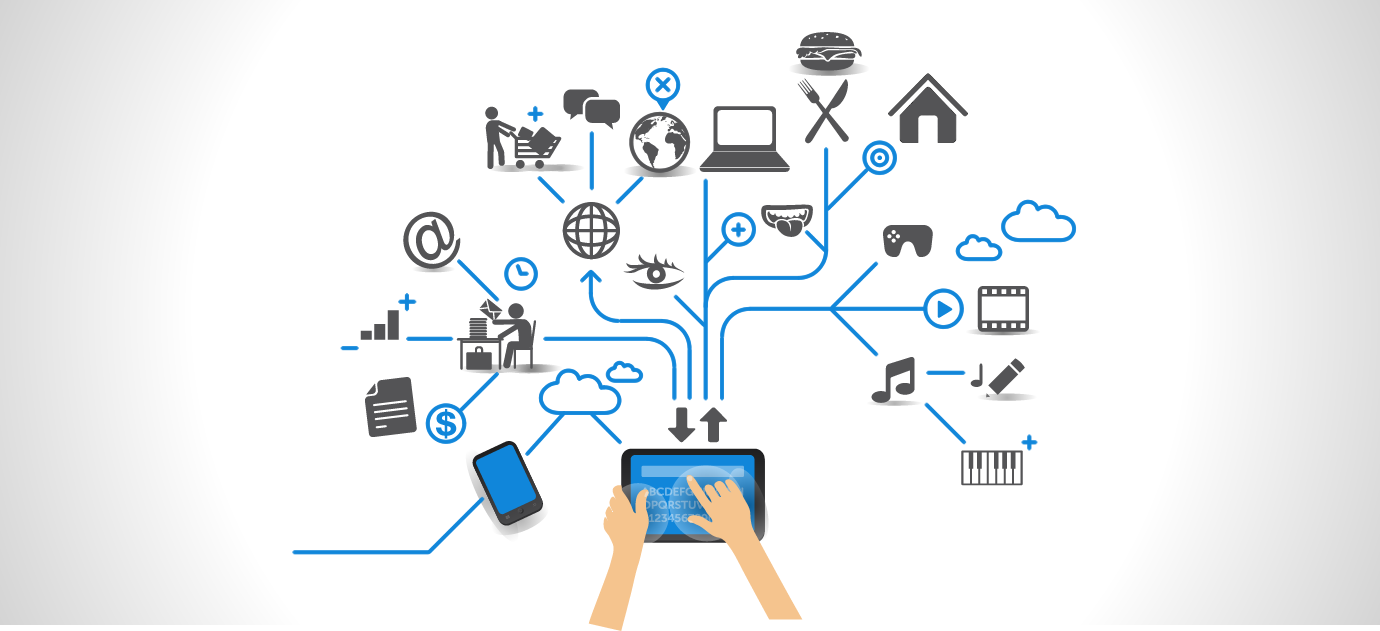
Existing search engines won't support Internet of Things: Experts
"Search engines have come a long way since their original purpose of locating documents, but they still lack the connection between social, physical and cyber data which will be needed in the IoT era," said the study's lead author Payam Barnaghi, Reader in Machine Intelligence at the University of Surrey in England.
"IoT data retrieval will require efficient and scalable indexing and ranking mechanisms, and also integration between the services provided by smart devices and data discovery," Barnaghi said.
With more and more IoT devices being connected to the internet, there is an urgent need to develop new search solutions which will allow information from IoT sources to be found and extracted, the researchers said.
Complex future technologies such as smart cities, autonomous cars and environmental monitoring will demand machine-to-machine searches that are automatically generated depending on location, preferences and local information.
New requirements will include being able to access numerical and sensory data, and providing secure ways of accessing data without exposing the devices to hackers.
"IoT technologies such as autonomous cars, smart cities and environmental monitoring could have a very positive impact on millions of lives. Our goal is to consider the many complex requirements and develop solutions which will enable these exciting new technologies," Barnaghi noted.
The article highlighting the latest research in this area by academics at the University of Surrey and Wright State University in the US was published in the journal IEEE Intelligent Systems.
While in the past, human users have searched for information on the web, the IoT will see more machine-to-machine searches which are automatically generated depending on location, preferences and local information.
Autonomous vehicles, for example, will need to automatically collect data (such as traffic and weather information) from various sources without a human user being involved.
The IoT also presents a challenge in terms of cyber security. Applications which rely on public data, such as smart city technologies, need to be very accessible to make them available to a wide range of applications and services.
"I see tremendous opportunities to effectively utilise physical (especially IoT), cyber and social data by improving the abilities of machines to convert diverse data into meaningful abstractions that matter to human experiences and decision making," Amit Sheth of Ohio Center of Excellence in Knowledge Enabled Computing at Wright State University said.
"IoT search, particularly for devices or machines to interact with each other to find and aggregate relevant information on a human's behalf, will become a critical enabler," Sheth noted.
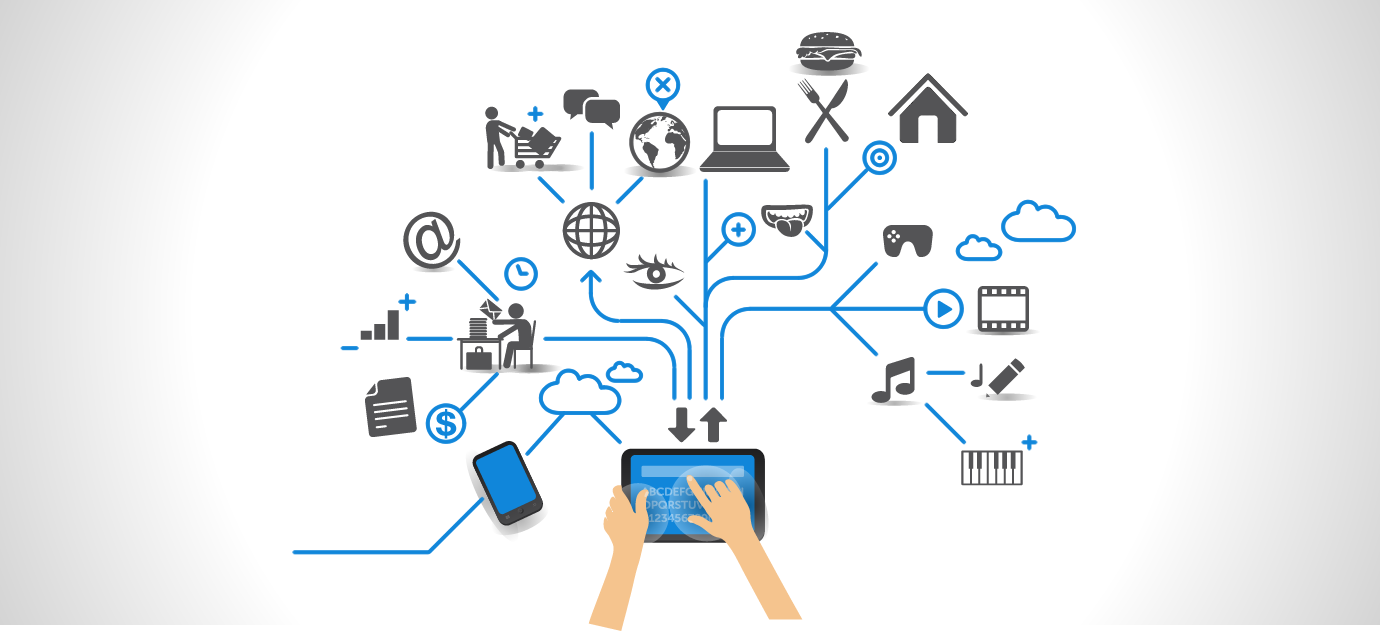
Existing search engines won't support Internet of Things: Experts
"Search engines have come a long way since their original purpose of locating documents, but they still lack the connection between social, physical and cyber data which will be needed in the IoT era," said the study's lead author Payam Barnaghi, Reader in Machine Intelligence at the University of Surrey in England.
"IoT data retrieval will require efficient and scalable indexing and ranking mechanisms, and also integration between the services provided by smart devices and data discovery," Barnaghi said.
With more and more IoT devices being connected to the internet, there is an urgent need to develop new search solutions which will allow information from IoT sources to be found and extracted, the researchers said.
Complex future technologies such as smart cities, autonomous cars and environmental monitoring will demand machine-to-machine searches that are automatically generated depending on location, preferences and local information.
New requirements will include being able to access numerical and sensory data, and providing secure ways of accessing data without exposing the devices to hackers.
"IoT technologies such as autonomous cars, smart cities and environmental monitoring could have a very positive impact on millions of lives. Our goal is to consider the many complex requirements and develop solutions which will enable these exciting new technologies," Barnaghi noted.
The article highlighting the latest research in this area by academics at the University of Surrey and Wright State University in the US was published in the journal IEEE Intelligent Systems.
While in the past, human users have searched for information on the web, the IoT will see more machine-to-machine searches which are automatically generated depending on location, preferences and local information.
Autonomous vehicles, for example, will need to automatically collect data (such as traffic and weather information) from various sources without a human user being involved.
The IoT also presents a challenge in terms of cyber security. Applications which rely on public data, such as smart city technologies, need to be very accessible to make them available to a wide range of applications and services.
"I see tremendous opportunities to effectively utilise physical (especially IoT), cyber and social data by improving the abilities of machines to convert diverse data into meaningful abstractions that matter to human experiences and decision making," Amit Sheth of Ohio Center of Excellence in Knowledge Enabled Computing at Wright State University said.
"IoT search, particularly for devices or machines to interact with each other to find and aggregate relevant information on a human's behalf, will become a critical enabler," Sheth noted.
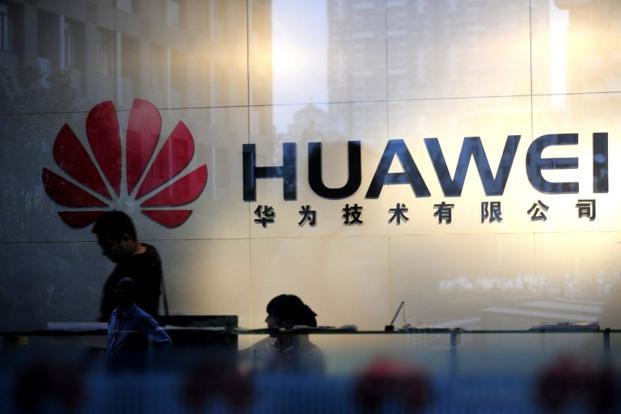
Huawei NB-IoT solution to be commercialized on a large scale from early 2017
The NB-IoT solution will help global operators expand their IoT services into new markets. At the conference, Huawei showcased its IoT strategy as well as IoT industry applications and innovations, and also offered insight into how it worked with its partners to jointly build an IoT ecosystem – including sharing network capabilities with these partners, setting up IoT open labs and promoting the development of IoT standards. By working with global partners, Huawei aims to boost social and economic productivity.
Jiang Wangcheng, Vice President of Huawei’s Marketing and Solutions Department, said: “NB-IoT has unique advantages in supporting IoT applications. Huawei will help carriers accelerate the commercial adoption of NB-IoT and the maturing of the industry chain. In order to accomplish this, Huawei will release the world’s first 3GPP-based NB-IoT commercial chip – Boudica, a system on a chip (SoC) that features high level of integration and ultra low power consumption.
“The SoC can be deployed with lightweight Huawei LiteOS, providing a quick development channel for developers. At the same time, we are also launching SoftRadio, a software suite that allows developers to access NB-IoT open labs via the Internet for remote innovation and commissioning. Huawei is committed to creating a bigger connectivity market so industry players as well as consumers can benefit from new opportunities and services. The IoT project and the success achieved so far fully demonstrate this commitment of ours,” he added.
The NB-IoT Solution was available on a small scale in September 2016. Huawei plans to conduct a large commercial trial in the fourth quarter of this year and release the solution for large-scale commercial use in early 2017.
The end-to-end NB-IoT Solution includes: Smart Device Solution enabled by Huawei LiteOS and NB-IoT Chipset; eNodeB base stations that can smoothly evolve to NB-IoT; IoT Packet Core that supports flexible deployment of Core in a Box and network functions virtualization (NFV); and a cloud-based IoT Connection Management Platform with big data capabilities. This solution is designed to meet operators’ requirements for IoT services with low-power and wide-area (LPWA) coverage. Developed based on 3GPP standards, the solution underpins flexible networking under various industry and use scenarios. In addition, the solution’s devices and platform can be made easily accessible to NB-IoT device and application partners, which makes it possible to rapidly achieve business innovation and scenario-based customization.
In addition to pursuing technological innovation and developing leading solutions, Huawei has proactively built a strong NB-IoT ecosystem as part of its goal to drive a thriving IoT industry. So far, Huawei has helped operators build NB-IoT open labs to accelerate the development of smart NB-IoT devices and applications. Huawei has also released an IoT open lab whitepaper to provide detailed guidance and support for developers to access and use the open labs.
Huawei possesses a wide variety of vertical industry practices in the NB-IoT sector. In 2015, the company cooperated with several top operators, including Vodafone, DT, China Unicom and Etisalat, to conduct service demonstration and testing based on smart metering and parking projects. This year, Huawei has been helping carriers to incubate many industry applications for smart metering, smart parking, smart lighting and smart tracking.Huawei is committed to continuing to drive the prosperity of the IoT industry and the construction of an IoT industry ecosystem.
Newsletter
Sign Up for Monthly Newsletter
Recent Tweets
CONTACT US
Crux Center for Security
Research and Events (CCSRE)
3rd Floor, Tower-B, Unitech Cyber Park
Sector 39, Gurugram,122022
0124- 4207903, 05, 06
Copyright © 2016 Crux Center For Security Research And Events (CCSRE) | All Right Reserved
